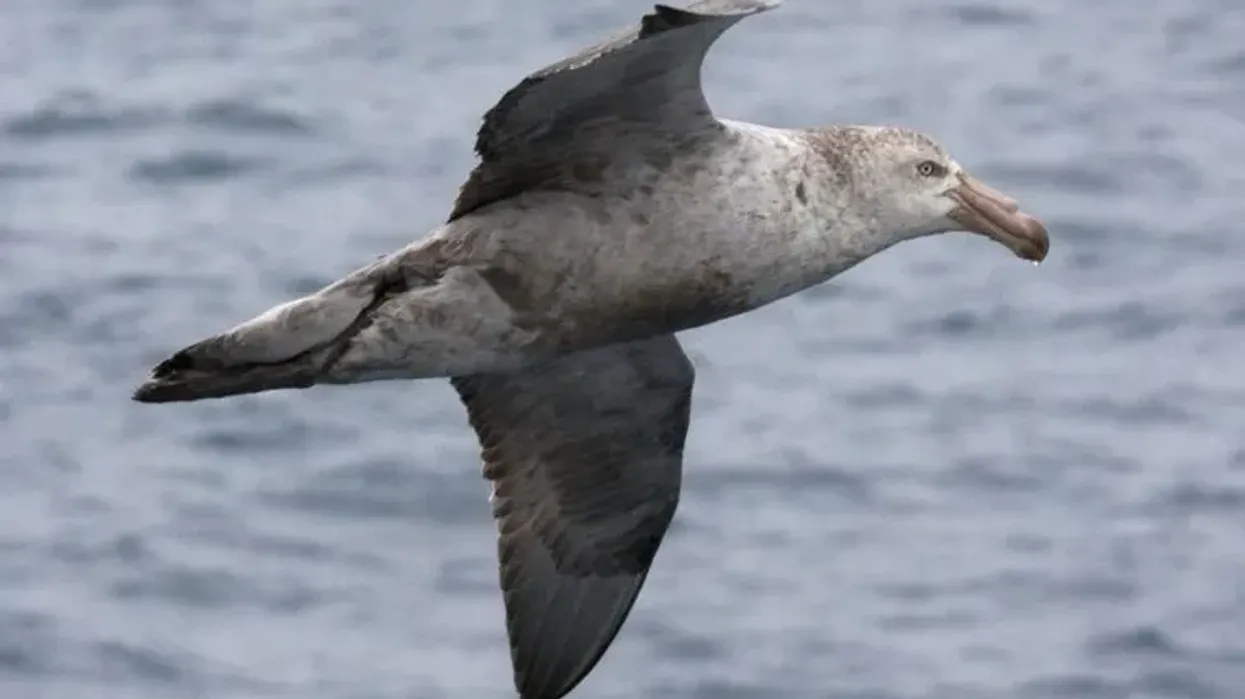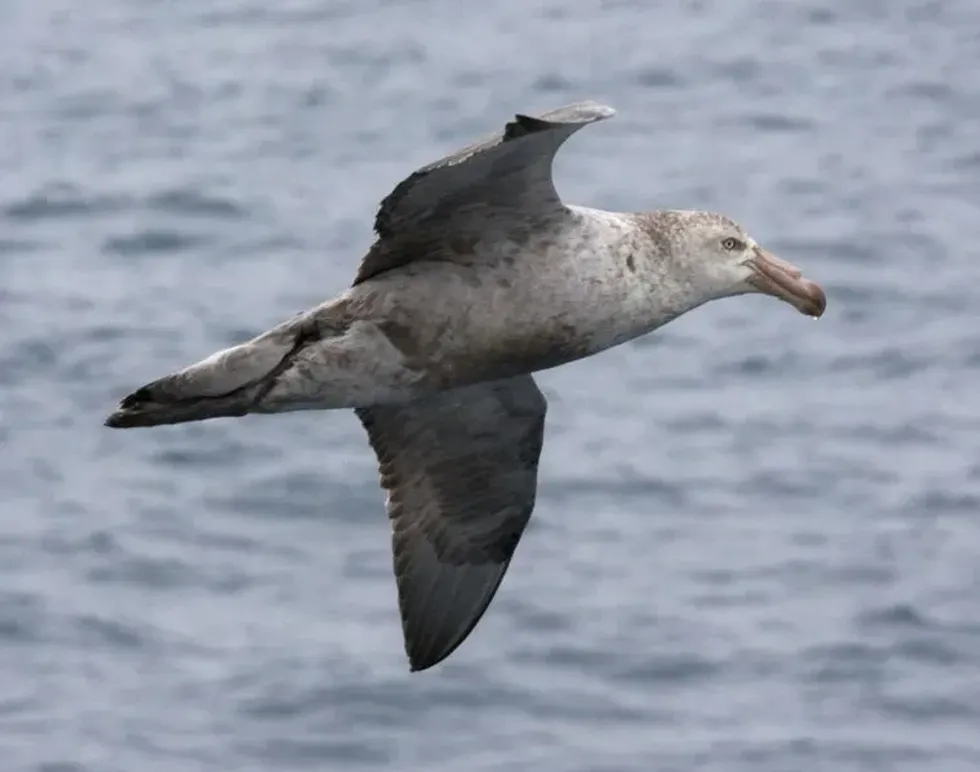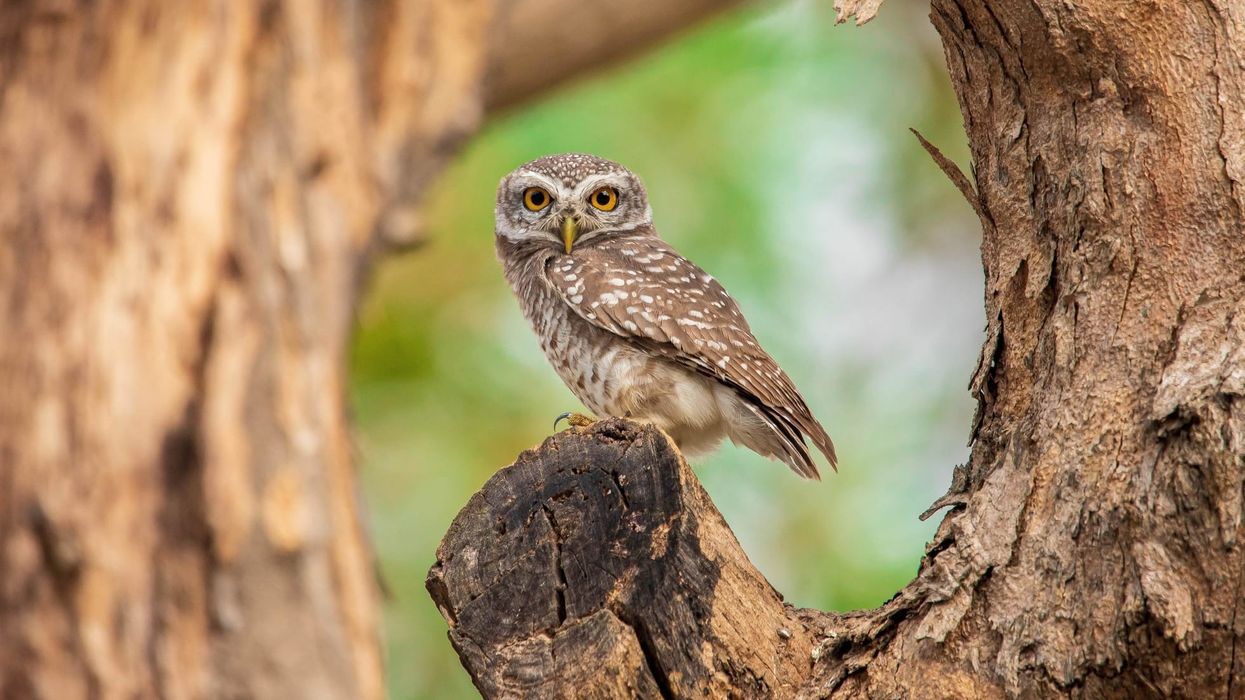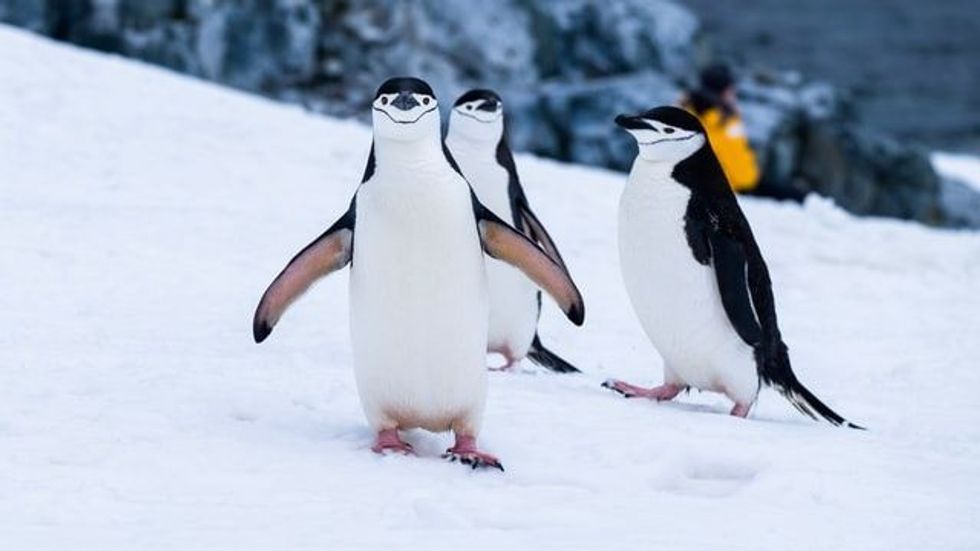Northern giant petrel, Macronectes halli, belongs to the family Procellariiformes, is known to be a large seabird, that is predatory of the southern oceans. It is believed that the distribution of the population of the northern giant petrels overlaps with that of its counterpart, southern giant petrels also known as giant fulmar (Macronectes giganteus).
Their range of habitat includes the Antarctic Convergence zone, Argentina, Chile, New Zealand, South Africa, Australia.
The family of these birds is known to nest in many islands that include the Chatham Islands, Crozet Islands. This species is known to be pelagic and circumpolar, that is, these birds are found in 30-64 degrees South.
During summer, these birds are found in the open oceans and during winter, these birds can be found in subtropical seas to about 28 degrees south. These birds are gray-brown in color and have dark gray colored legs and feet and whitish eyes.
The most distinguishing feature of the northern giant petrel is its bill. The bill of this petrel is quite long and pinkish-colored.
Juveniles are born dark and lighten as they grow old.
In New Zealand, northern giant petrels breed from August to February. These northern giant petrels are monogamous and share incubation and rearing and guarding chicks.
The nest is made of stalks, twigs, and leaves and one large, white egg is laid and incubation is done for about 60 days. Fledging takes place in about 112 days.
This bird is known to breed six weeks before or earlier than the southern giant petrel (Macronectes giganteus) which are known to be pale green in color. It is believed that the breeding colonies of the two species that is the northern giant petrel and the southern giant petrel share the breeding islands.
These birds are known to feed on or the food of this bird includes krills, squids, and fishes and also feed on carcasses of marine animals like seal pups and carrion.
Northern giant petrel can be distinguished from the southern giant petrel by certain features like the latter is pale green in color. The status of this bird is Near Threatened.
It is quite interesting to know about northern giant petrel, Macronectes halli and if you are interested, read about kea parrot facts and hawk facts too.
Northern Giant Petrel Interesting Facts
What type of animal is a northern giant petrel?
Northern giant petrel is a bird.
What class of animal does a northern giant petrel belong to?
It belongs to the class of Aves of birds.
How many northern giant petrels are there in the world?
There is no specific estimation of the population of these seabirds in the world.
Where does a northern giant petrel live?
The northern giant petrel is found all along the South Ocean, the range includes the Antarctic Convergence zone, Argentina, Chile, New Zealand, South Africa, Australia. These birds are known to nest in many islands that include the Chatham Islands, Crozet Islands. Sometimes, these ranges overlap with the distribution of southern giant petrels.
What is a northern giant petrel's habitat?
This species is known to be pelagic and circumpolar, that is, these birds are found in 30-64 degrees south. During summer, these birds are found in the open oceans and during winter, these birds can be found in subtropical seas to about 28 degrees south.
Who does northern giant petrel live with?
These seabirds can be seen in groups as well as can be spotted alone.
How long does a northern giant petrel live?
The exact lifespan of these birds is unknown.
How do they reproduce?
The reproduction system of the northern giant petrel is known to be monogamous. The breeding season might depend on the range and in New Zealand, the breeding season takes place from August to February.
Nest is made using stalks, twigs, and leaves. The nesting and breeding of these birds take place in colonies.
This nest is usually placed in lower elevations or altitudes on the ground with abundant vegetation. One white-colored large egg is laid by the female in August or September and the incubation is done by both parents.
The egg is also guarded by both the parents, although it is believed that the male tends to take up most part of incubation and guarding responsibility.
The incubation period lasts for about 60 days and after that, the chicks or the newborns are brooded for about 2-3 weeks. Fledging happens after about 112 days of age.
It is believed that this species' first breeding takes place at about 10 years of age. This bird is known to breed six weeks before or earlier than the southern giant petrels (Macronectes giganteus).
What is their conservation status?
The conservation status of the northern giant petrel is Least Concern. It is believed that this giant petrel was on the red list of IUCN and its status was Near Threatened and later was shifted to Least Concern.
Northern Giant Petrel Fun Facts
What does northern giant petrel look like?
Northern giant petrels are gray-brown in color and the forehead, chin, and side parts of the face are a pale or lighter shade of brown. The bill of this bird is quite long, the length of the northern giant petrel bill is 3.5-4.3 in (90-110 mm).
The bill has a brown tip and is pinkish-yellow in color. It is known to have a long tarsus and the feet and legs of this bird are dark gray.
The eyes of this bird are gray.
The young ones or the chicks of this bird have a dark plumage when born and it is known to lighten with age or they grow old. Males of this species are known to be bulkier or heavier and have larger bills as compared to females.

How cute are they?
These birds are not considered cute, although this is subjective.
How do they communicate?
Not much information is available regarding this bird's communication but they are known to produce different types of sounds and calls to communicate just like other birds.
How big is a northern giant petrel?
These giant petrels are known to resemble the wandering albatross but are smaller in size than an albatross. The length of these seabirds ranges from 31-37 in (800-950 mm).
How fast can a northern giant petrel fly?
The northern giant petrel is known to fly at speeds of up to 45 mph (72 kph).
How much does a northern giant petrel weigh?
The weight of these seabirds is around 9.2 lb (4.2 kg) on average and can range from 5.5-13 lb (2.5-6 kg) in general.
What are the male and female names of the species?
There are no specific names for the males and females of the northern giant petrel.
What would you call a baby northern giant petrel?
There is no particular name for a baby of this species but they can be generally referred to as juveniles or young ones.
What do they eat?
These giant petrels are known to feed on squids, fishes, krills, carcasses of various marine animals or mammals. They are also known to scavenge on or their food includes placentae, seal pups, albatross, and penguins, carrion.
Are they poisonous?
This species is not poisonous.
Would they make a good pet?
Not much information is available regarding these birds as pets and it is believed that this bird does not make a great pet as it is a wild bird.
Did you know...
This species is also known as Hall's giant petrel.
The colonies or the population of the largest bodies of this species are known to be found in South Georgia Islands while the smallest population is recorded or observed in Chatham Island.
These birds are known to have a strong and foul smell and thus, traditional seafarers named these birds as 'stinkpots' or 'stinker pots'
The northern giant petrel is known to be an aggressive and opportunistic bird.
Longline fishing is known to cause a lot of harm to the population of northern giant petrel. Initially, its status was Near Threatened, as the population of these birds was declining but due to better control of longline fishing, increase in fish waste and other such factors led to increasing population, its status changed to Least Concern.
This giant-petrel is known to have no natural predators.
These giant petrels are capable to prey open large mammals and animals like seals, penguins and whale carcasses by using their long bill to create holes for their food.
The genus name Macronectes is derived from the Greek word 'makros' which means long or large and the word 'nektes' means swimmer. The word petrel is known to have a biblical reference to Saint Peter, walking on water.
The giant petrel is known to have some sort of stomach oil with wax esters which is used as a defense mechanism and sprayed out of the mouth during long flights.
This giant petrel desalinates their bodies by excreting a saline solution out of their noses as they have a salt gland located above their nasal passage.
Are they loud?
Northern giant petrels are known to be loud and are also known to make loud hissing and mewing sounds or noises and these seabirds are also known to clatter their mandibles loudly to keep the trespassers away.
Are they predators?
Yes, these birds are predators as they prey on fishes, squids, krills, and other such animals.
Here at Kidadl, we have carefully created lots of interesting family-friendly animal facts for everyone to discover! For more relatable content, check out these magpie facts and Cooper's hawk facts pages.
You can even occupy yourself at home by coloring on one of our free printable Northern giant petrel coloring pages.








